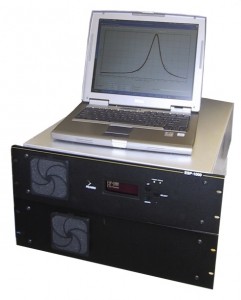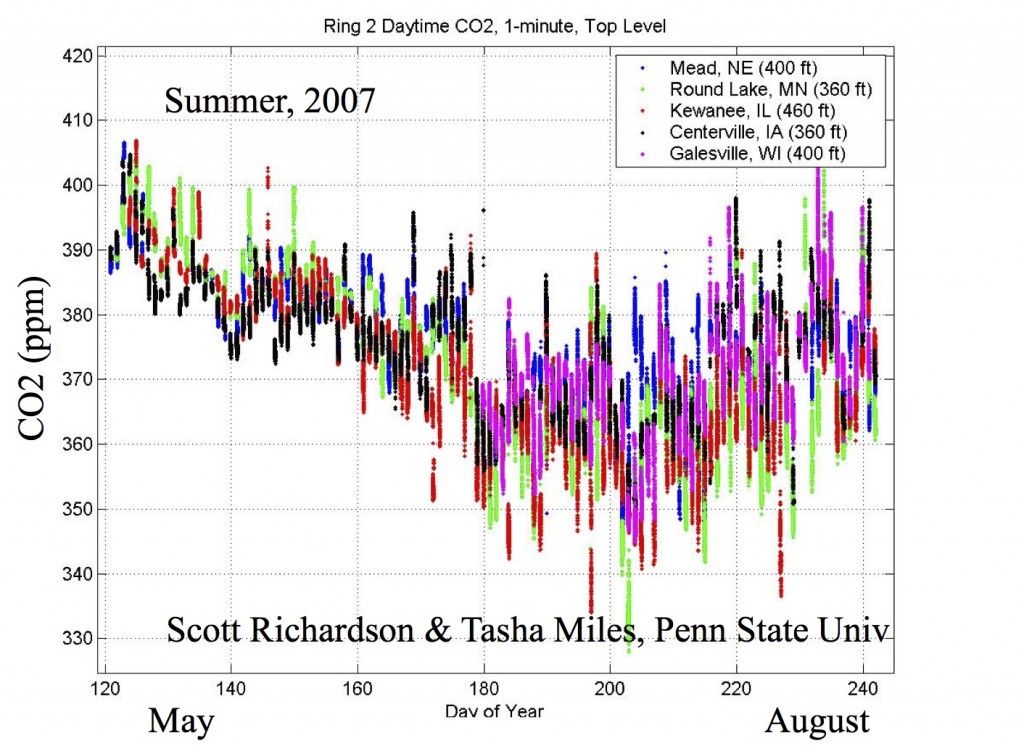DOE Ring2 MidContinent CO2
Syntheses of carbon dioxide flux and mixing ratio measurements in support of the North American Carbon Program Midcontinental Regional Intensive
DOE Terrestrial Carbon Program 2008-2010
Northern hemisphere ecosystems play an important and highly variable role in the global carbon cycle (e.g. Bousquet et al., 2000; Gurney et al., 2002). Understanding the carbon cycling of northern terrestrial ecosystems is essential for reducing uncertainty in the future greenhouse gas burden of the atmosphere (e.g. Friedlingstein et al., 2003). In response to these scientific needs, U.S. scientists drafted the North American Carbon Program science plan (Wofsy and Harriss, 2002).
Overarching questions posed by the North American Carbon Program (NACP) include: 1) Diagnosis: What is the carbon balance of North America and adjacent oceans? What are the geographic patters of fluxes of carbon? How are these fluxes changing over time? and 2) Attribution: What processes control the sources and sinks of carbon, and how do the controls change with time? The NACP Science Implementation Strategy (SIS) was drafted to guide research towards answering these overarching questions.
The NACP Science Implementation Strategy (Denning et al., 2005) recommends, “Major diagnostic studies…in which measurements of carbon storage on land and in the oceans between reservoirs will be made in a coordinated series of experiments. Process-based models will be used in conjunction with remote sensing and other spatial data to estimate net carbon fluxes and storage across the continent at fine spatial and temporal resolution. These gridded estimates will be compared…to independent estimates made from observations of atmospheric trace gas concentrations and trajectories. Mismatches between top-down and bottom-up flux estimates will be used to improve diagnostic and predictive models through innovative techniques such as data assimilation…Several “intensive field experiments” will be conducted as part of the diagnostic research program, intended to test each element of the “model-data fusion” framework with multiply-constrained estimates of regional fluxes. After the intensive period, the program will leave a network of systematic observations and analytical models in place that is optimally configured for continued monitoring of future carbon cycling over North America…”

The Midcontinental Intensive (MCI) proposed by Tans in 2004 is the first such intensive in this program. The goal, as noted above, is to bring together so-called top-down (atmospheric inversion) and bottom-up (ecological models or inventory) estimates of the carbon balance of the upper Midwestern region of the United States in order to establish methods for long-term observations of the regional terrestrial carbon fluxes. Regional flux estimates are needed to bridge the gap in scales between detailed but difficult to extrapolate process understanding being gathered via eddy-covariance flux tower measurements (e.g. Baldocchi et al., 2001) and manipulative ecosystem experiments (e.g. Hanson et al., 2005), and the strong global constraints lacking mechanistic understanding which is provided by atmospheric budgets (e.g. Battle et al., 2000). Both the top-down and bottom-up approaches are challenging at regional scales, and successes to date are limited.
This proposal seeks to implement an innovative atmospheric inversion study based heavily upon measurements made by the AmeriFlux network. The project will be a centrally important contribution to the NACP Midcontinental Intensive, and will yield fundamental and new methodological progress towards regional flux estimates using a synthesis of atmospheric inversions and flux measurements.


